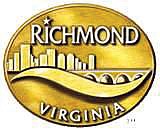Minor shifts expected in city redistricting
Jeremy M. Lazarus | 2/24/2022, 6 p.m.
The majority of Richmond residents, as anticipated, will not experience any impact from the boundary changes made once every 10 years to City Council and School Board districts.
While the city added about 24,000 residents in the past 10 years including prisoners in state correctional facilities, the growth was spread relatively evenly, the data from the 2020 Census show.
As a result, with City Council poised to wrap up the redistricting process, four of the current districts—the 1st District in the West End and the 4th, 8th and 9th districts in South Side—are recommended for no changes because their current populations are close to the ideal of around 25,400 residents.
Two other districts, the central 5th District that is split by the James River, and the 7th District, which includes Church Hill, Fulton and part of Shockoe Bottom, might see tiny changes.
Small changes involving only a few thousand residents are recommended for the city’s three remaining districts— the 2nd District, which includes the Fan and part of North Side; the 3rd District, which includes most of North Side; and the 6th District, which includes Downtown and portions of North Side and South Side.
Overall, the city’s five majority-Black districts, the 3rd, 6th, 7th, 8th and 9th, would remain so according to the City Council’s consultant, J. Gerald Hebert.
Council members sat down Wednesday afternoon, with hopes the governing body might agree to a final redistricting map. Based on the discussion, it appeared that an additional meeting might be needed. The goal, though, is to approve a final map by the end of April.
Based on the 2020 Census count, Richmond has a listed population of around 228,610, including the prisoners. That compares to a 2010 population of 204,214, when the impris- oned were not included. With the city cut into nine districts, every district ideally would have around 25,400 people.
To prepare, five largely similar maps that city residents helped draw two weeks ago have been publicly released and will form the basis of the council discussion.
Based on the data, the 3rd District currently has too few residents, and the 2nd and 6th Districts too many, requiring some changes to bring them closer to the ideal population.
The five maps recommend that a big chunk of Precinct 203, based at the Arthur Ashe Center in the 2nd District, be moved to the 3rd District.
Essentially, the shift would involve most of the area south of Laburnum Avenue, north of Westwood Avenue and west of Brook Road to Interstate 95/64. Sherwood Park, Rosedale and Laburnum Park are among the neighborhoods that would be moved to the 3rd District if the council en- dorses that change.
The change would allow the 2nd District to keep the Dia- mond District around the baseball stadium, the site the city is targeting for a major residential, retail, commercial and entertainment development anchored by a new ballpark.
The 3rd District also is recommended to expand. Four of the maps recommended that a section of Southern Barton Heights largely west of North Avenue be transferred from the 6th District to the 3rd District, while one map recom- mends transferring to the 3rd District a small section of the 6th District adjacent to Providence Park.
Two of the five maps also recommend transferring a small section of the 6th District between Hull Street and the Lee Bridge to the 5th District, which otherwise would be unchanged.
Finally, the 7th District might be snipped to reduce its population by about 38 residents to bring it closer to the ideal. One recommendation is to take a bit from Shockoe Bottom and restore those residents to the 6th District, which lost them 10 years ago.






